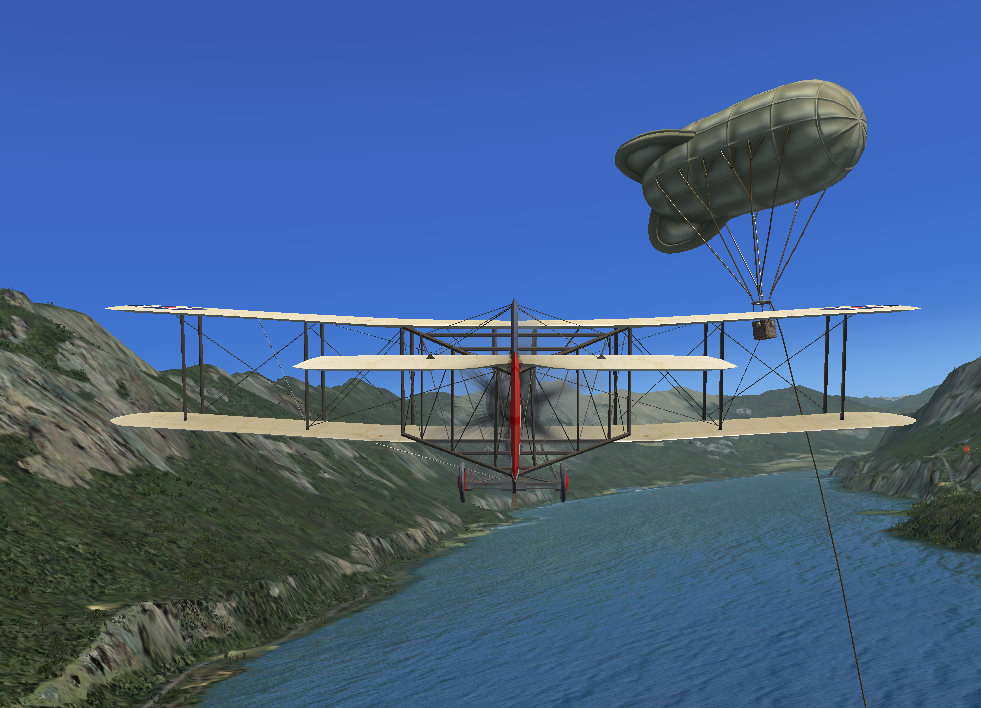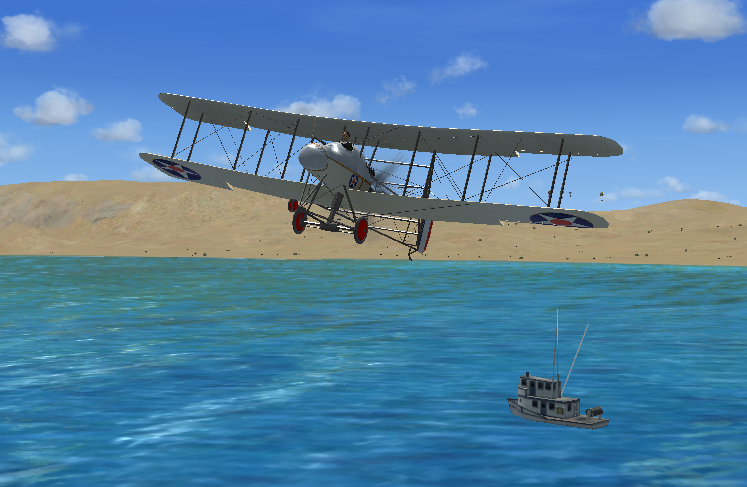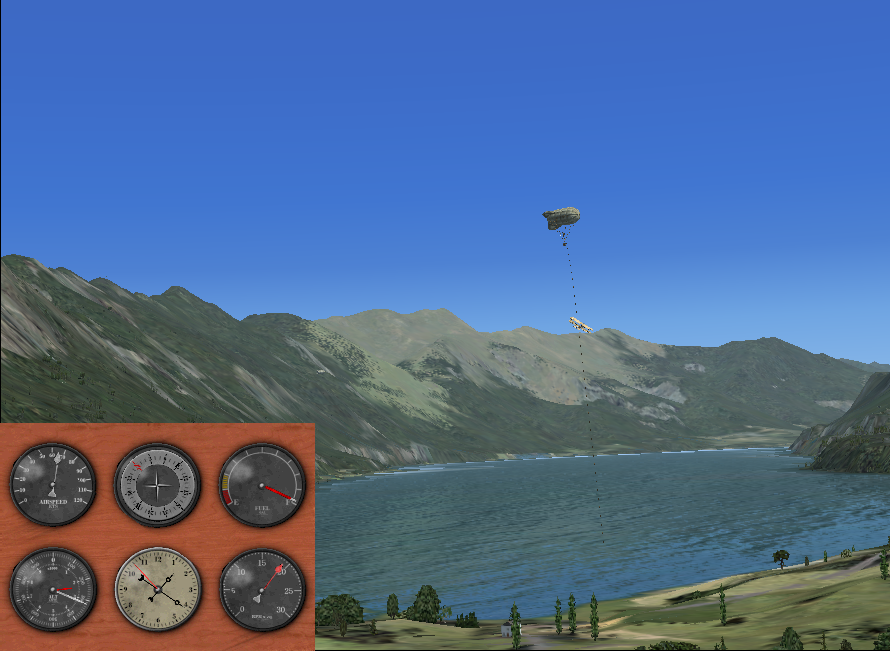


ACE -
Knights of the Sky series (prototypical)
What I've worked on:
What I've worked on:
•Four
singleplayer missions
•Two airplanes
•One panel gauge
•Two airplanes
•One panel gauge
This is a
series-in-progress that's designed, essentially, as a conceptual
re-skin of an earlier set of educational missions we'd previously
developed. The goal here is to take what are educationally-sound
missions and tie them back in with a story wrapper.
There's one very obvious danger here - having pre-designed missions and then adding a story can make the story tend towards being an afterthought. My task, then, is to find a way to preserve the educational objectives of the missions while at the same time making the general flow subservient to the story.

The low-hanging fruit on something like this is, then, the visual appearance of the content. This is really a pretty easy part. Because the previous missions were designed to introduce some basic concepts anyway, it was only very basic flight aspects of flying that were introduced.
For example - a large part of the content of these missions depended on using an ultralight plane (essentially, an engine strapped to a hang-glider). Knowing that early flight was basically predicated on "strapping engines to gliders," I simply researched airplanes of that era until I found one that was mechanically similar, at which point it became a basic exercise in swapping the model of the ultralight with my period aircraft.
The more difficult part was maintaining the basic objectives of the missions while fitting appropriately in the period and story. To work out most of this, my approach would
usually be to divine the function of the objective rather than the appearance. Once I knew what something was doing, I researched period-appropriate
tasks and worked with the storywriter to massage some of these tasks back into the story he was writing.

Often, for example, the player was required to fly through a "gate" - a rectangular square in the sky defining some plane perpendicular to the direction of flight. For my purpose, I looked at the example of World War 1-era observation balloons, which defined a point in the sky (the first thing I needed to do to create a rectangle). I could then place two of them side-by-side (now two points in the sky, a line).
To complete the rectangle, I needed two more points, but it would have looked awkward to simply have two more balloons floating directly below the first two. So instead, I looked at smoke flares, a device often used to communicate visually in the sky. I made each balloon emit a smoke flare, then, that trailed downward and controlled for the fadeout at a specific point, thus creating points three and four.
There's one very obvious danger here - having pre-designed missions and then adding a story can make the story tend towards being an afterthought. My task, then, is to find a way to preserve the educational objectives of the missions while at the same time making the general flow subservient to the story.

The low-hanging fruit on something like this is, then, the visual appearance of the content. This is really a pretty easy part. Because the previous missions were designed to introduce some basic concepts anyway, it was only very basic flight aspects of flying that were introduced.
For example - a large part of the content of these missions depended on using an ultralight plane (essentially, an engine strapped to a hang-glider). Knowing that early flight was basically predicated on "strapping engines to gliders," I simply researched airplanes of that era until I found one that was mechanically similar, at which point it became a basic exercise in swapping the model of the ultralight with my period aircraft.
The more difficult part was maintaining the basic objectives of the missions while fitting appropriately in the period and story. To work out most of this, my approach would
usually be to divine the function of the objective rather than the appearance. Once I knew what something was doing, I researched period-appropriate
tasks and worked with the storywriter to massage some of these tasks back into the story he was writing.

Often, for example, the player was required to fly through a "gate" - a rectangular square in the sky defining some plane perpendicular to the direction of flight. For my purpose, I looked at the example of World War 1-era observation balloons, which defined a point in the sky (the first thing I needed to do to create a rectangle). I could then place two of them side-by-side (now two points in the sky, a line).
To complete the rectangle, I needed two more points, but it would have looked awkward to simply have two more balloons floating directly below the first two. So instead, I looked at smoke flares, a device often used to communicate visually in the sky. I made each balloon emit a smoke flare, then, that trailed downward and controlled for the fadeout at a specific point, thus creating points three and four.